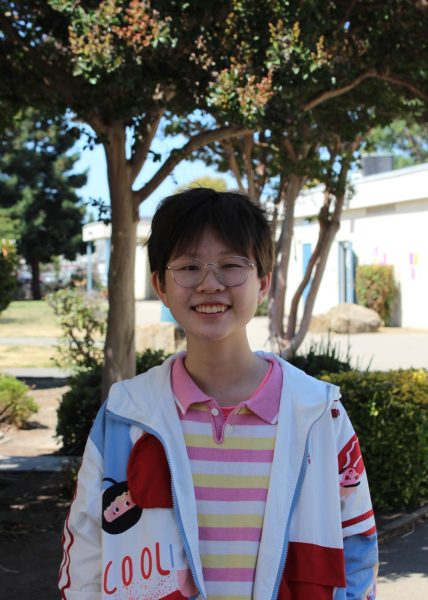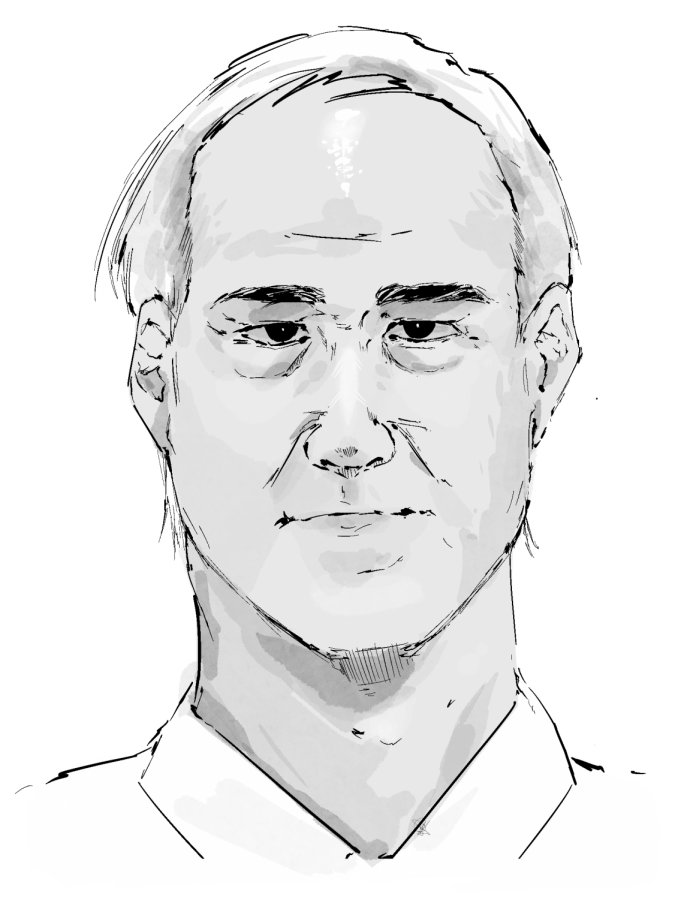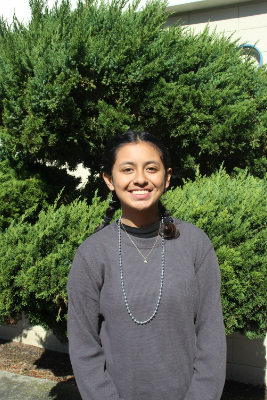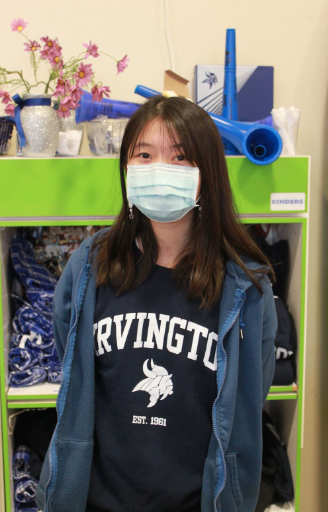The State of High Schools Today: Dr. Stuart Slavin
“Irvington was the first high school I studied. There was a teacher, Mr. Jay Jackson, who was an assistant principal at the time. He invited me in and the school allowed me to do that original survey in 2015. A lot of it was really based on my work at the medical school level at St. Louis University—just to try to figure out what the problems were in terms of mental health of medical students—and it seemed like there were similar issues with high school students, and that’s why I ended up doing the survey. The survey was completely optional, but the vast majority of students completed it. And a lot of it was based on really two things. One was just trying to do mental health screens using widely used instruments, measuring depression and anxiety. We wanted to measure those, but then what I was really interested in was the life of students. What was their estimation of how much time they spent on different activities? How much homework, how much extracurricular activities, how much sleep they were getting. Then the other piece of it: what were their perceptions of what stressed them out? That’s what I was really interested in exploring.
The depression and anxiety measures were screens that have been used for decades actually, and are very well-validated so that we know that they’re really accurate in terms of assessing symptoms of depression and anxiety; I did some of the other things, like the stressor screen.
The potential stressors, and the big stressors that we divided into, were things related to school including the amount of homework, competition for grades, pressure to perform well for parents, teachers, and administration. That was one big area—school stresses. The second area was social services with questions asking ‘were you stressed by your boyfriend or girlfriend,’ or ‘were you being bullied or was social media a stressor.’ The last one was regarding family conflicts and things like that. So those were the three broad areas and we just tried to come up with questions that would sample broadly all of the things that could have an impact on students’ lives.
When looking at results, the top 10 stressors were all school-related with number one being pressured to get into a good college. Up there also was time pressure and pressure from self was high. What was interesting, we asked them two things about parents —we asked them about pressure from parents, and pressure not to disappoint parents, and both of them were high but the pressure to not disappoint parents was higher than direct pressure. What was really most striking is that so much of the stress was school-related and very little related to social media, bullying, boyfriends or girlfriends, and problems with family. It seemed really clear that the main driver of student distress was the school culture. I think it’s somewhat worse at Irvington and at some of the schools I’ve looked at it’s more intense pressure. This is going on across the country—the same exact pattern.
To be really clear, this is more in urban and suburban areas. I haven’t studied schools in rural areas or underserved areas where there’s a lot of poverty, but these are all communities that are like middle class or higher. Across the country, this is what’s going on.
There are multiple factors, there’s not one party to blame. Everybody contributes to what I say is a culture of pressure. Parents want their kids to do as well as possible—you know, they want their kids to be successful, and they think to be successful, you got to get into the best colleges possible. The teachers, they’re under pressure that their students have to get high test scores, you know, for their school, as are the administrators. Then the kids themselves really believe things like, ‘Oh my gosh, if I don’t get into Stanford or Berkeley, that’s it.’ They think that you know, then they aren’t going to be able to become a doctor or lawyer or things like that.
It’s all craziness. You don’t have to go to Stanford, or Berkeley to be successful. Everybody’s chasing this thing and they think if they apply more pressure and if they give you more homework, and have you study more and more, that by definition, that means that you’ll have a better outcome. The really sad piece is, it’s not going to lead to good mental health outcomes. What’s even sadder about it is I really believe that educational outcomes are incorrect. One of the most important findings from my studies – and it’s every single school I’ve ever looked at – the average kid is getting less than seven hours of sleep a night. Your brain is not functioning well, you’re not going to learn well especially if you’re depressed or anxious so I don’t even think it’s good for learning. A lot of people mean well, but ultimately I think the kids are paying the price.
Perfectionism in high school students is rampant. If you suffer from maladaptive perfectionism, you’re always feeling like good enough is not good enough. We know that correlates strongly with depression and anxiety and honestly one of the things that worries me most about it is if you’re depressed or anxious as a teenager, it dramatically increases the risk of you having depression or anxiety as an adult. So this isn’t temporary, we’re wiring your brains at those ages.
We should decrease homework. We should decrease the amount of time spent on extracurricular activities. And you know what I think would happen? I think academic performance would actually improve. I think students would do better because their mental health would be better. The other thing that we need to do is teach students to be able to recognize that they can think differently. They don’t have to beat up on themselves, they don’t have to feel terrible about their performance. Having what I would term a healthy pursuit of excellence, rather than an unhealthy pursuit of perfection. That’s what we need to be doing.
That’s essentially what we did at St. Louis University with medical students. We reduced depression and anxiety rates by 80 to 90% and our students said that they reported spending an hour and a half to two hours less per day in class or studying than the average medical student. Their academic performance improved. It didn’t fall, it improved! On the national board exam, their failure rate was half the national average.
We’ve got this crazy idea that more is always better. If our homework is good, two hours must be better and if two hours is good, imagine what students can do with four hours. But it’s not how performance works, and it’s terrible to see. I think what happens is when you get a kid who’s depressed or anxious, we think the problem is with them, rather than what we’re doing to them. No, they have a mental illness because of what you’re putting them through, you know. So yeah, it’s a real problem.
The solution is so simple. That’s what’s so frustrating to me as it’s really hard to get schools to do this. Teachers have to back off on assignments and homework, coaches and drama teachers and all others have to back off on the amount of time in those activities. Parents need to learn that the pressure they’re putting on their kids is hurting their mental health. Kids themselves need strategies that are really easy to learn, where you can recognize that you can choose to think differently, ‘I can still be successful. I can still go to a great college. I don’t have to freak out if I have a B in a class.’ So the fixes aren’t that difficult, but it’s really hard to get schools to change.
I’m going to do a workshop for a number of high schools in Ohio on how to change your thinking with some follow-up sessions. The follow-up sessions will be maybe once a month with counselors or social workers to talk about how the kids are doing and we’re gonna measure it—you’ll see the depression/anxiety at baseline and then we’ll see three months into this and see if it makes a difference. What I’d like to do is not to develop some big curriculum but see if we can teach these skills to students in as little time as possible. I don’t want to do a huge, 20-hour course, because students are already too overwhelmed. I want to see if that’ll make a difference because what we need is more of an evidence base to say that the things I did in medical school can be done in high school. I’d love to see more schools doing that.
What’s really interesting is that when I do these workshops for students, they always are blown away. Because when I talk about these mindsets and the cognitive distortion, it’s like I’m holding up a mirror to them. The kids are going, ‘Oh my god, you know how my brain works in a way that very few people do.’ Once you’ve done that and taught the tools, changing your thinking becomes so easy. I think about what this third-year medical student once said after a workshop, she goes, ‘Dr. Slavin, thank you so much. You’ve given me a vocabulary to understand my thinking. Before, I just thought I was screwed up.’ I want to give students a language to see these patterns of thoughts which are so widespread, and to recognize now you’re not the only one who thinks that he should think that way. It’s not that you have to get rid of those negative thoughts. You have to recognize when you’re thinking a certain way and go ‘Wow, Dr. Slavin said I don’t only have to think that way.’ What it’s about isn’t lowering standards, it’s just causing yourself so much harm in the process.”













